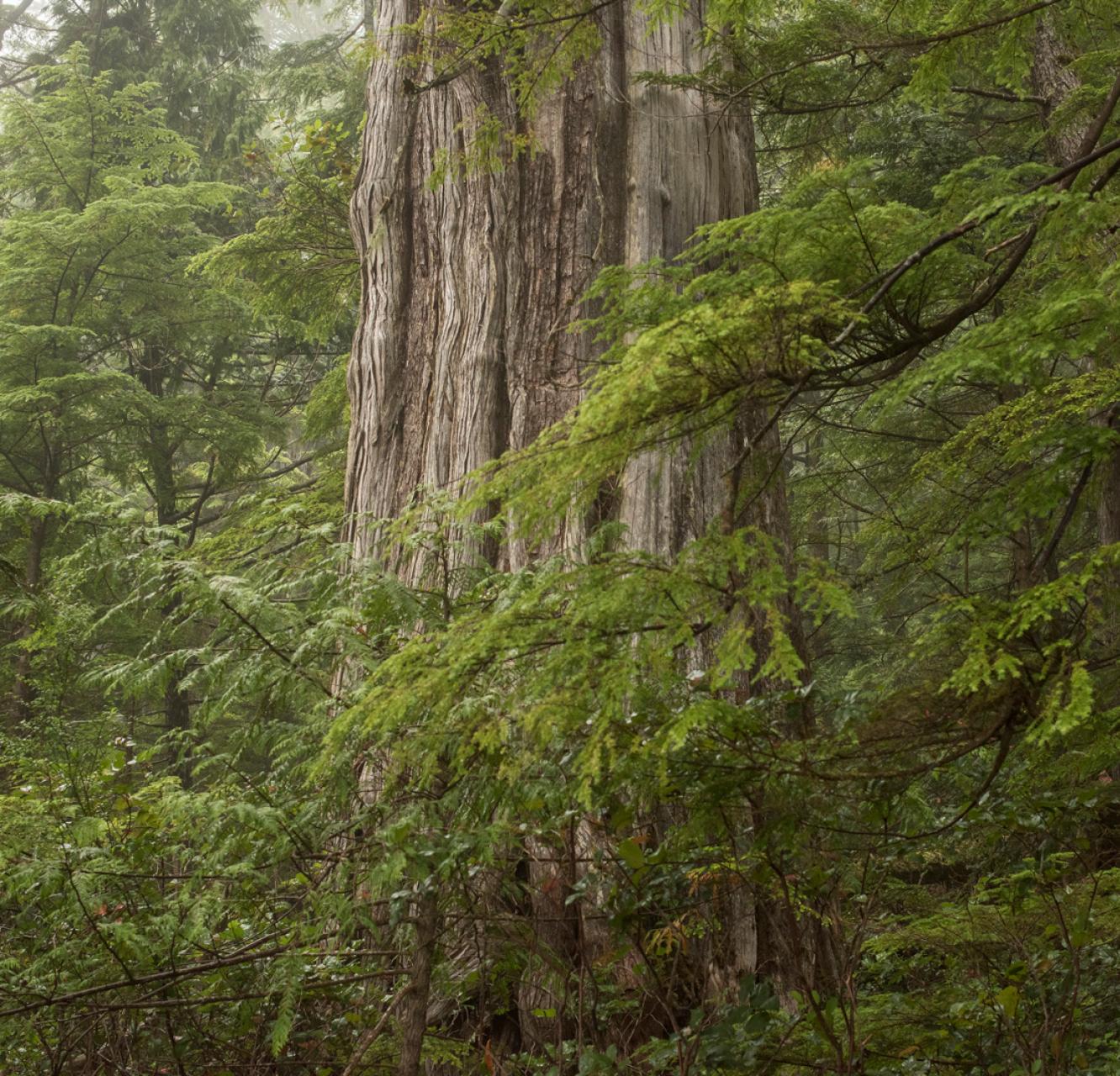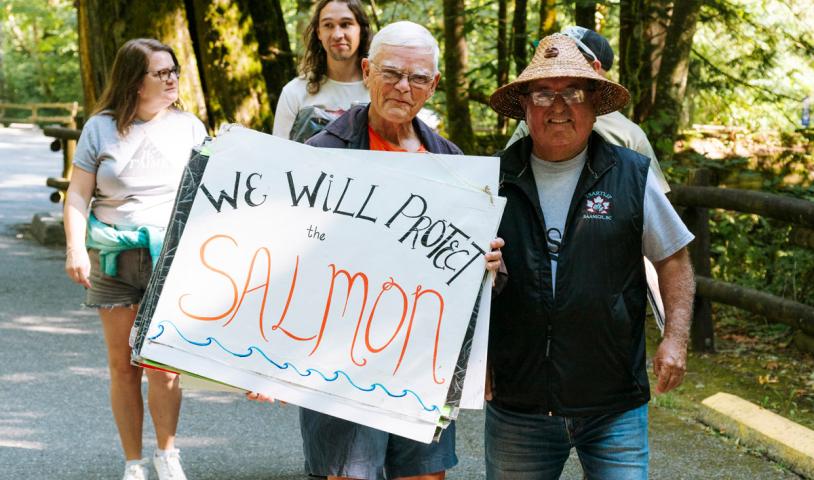Community Forests: Rhetoric and Reality
Thursday, December 23, 2010
I was recently alerted to a disaster in the making regarding logging rare low elevation rainforest in the magnificent Robson Valley, home of the original “Tree Beard” old growth forest east of Prince George, British Columbia.
The conservation group in the area, Save The Cedar League, alerted me that the McBride Community Forest Corporation was intent on logging in an enormous area totaling 16 square kilometres. (One square kilometre is an area ten times the size of a regulation soccer pitch, including sidelines.) When I heard this I thought, ‘Wow, that is a lot of forest for a little community forestry operation to be logging, and it is precious and rare low-elevation forest that has historically been spared the axe.’ Not long ago the area was even recommended for protection by the conservative Forest Practices Board. So what, I thought, is this community group, specifically created to log in a kinder and gentler way, doing?
I started doing some research into community forests in BC and found out that although they were inspired by thoughtful people trying to give forestry a better environmental and social reputation, some of them have turned against these principles and embraced the very style of logging they were intended to replace.
A History of Greed
Community forests are a recent innovation in BC, dating only to the mid-1990’s, ironically coinciding with the collapse of many of the corporate forestry titans. The history of forestry in BC can be summed up in a nutshell: greed manifested by more greed. Corporate titans rapaciously over-logged our publicly-owned forests, producing massive quantities of low-end, cheap products (like rough cut 4x4’s, plywood, shingles, fence-posts and pulp) from our high quality wood, until other warmer jurisdictions figured out they could grow trees twice as fast as us. Instead of re-tooling their mills to produce high-end products from our high quality wood, the corporate titans simply produced more and more of the same, and made efficiencies like ripping up their social contract to operate mills in small communities, consolidating lumber mills, and getting government to relax environmental standards.
Eventually the supply of easily accessible timber gave out and many of the titans packed up and left, abandoning the communities that became dependent on them. As the timber titans were leaving, the province had to act quick to keep revenue flowing in. They did it by allocating 20% of the corporate harvest to communities and to the BC governments own logging company, BC Timber Sales.
In an effort to generate employment in small towns, and avoid the mistakes made by the departed timber titans, the BC government established community forests and allocated them a guaranteed supply of timber, as long as they agreed to log at a rate dictated by government. About 20 community forests are operational today and 30 more are in the process of being approved. Unfortunately Community Forests took the easy way out; the forests surrounding small communities, including their drinking watersheds, were typically not heavily logged by the titans in an effort to preserve quality of life for citizens.
Absence of Government Leadership
Unfortunately, in a misguided effort to generate start-up revenues to re-open idle mills, many community forests soiled their own backyard; they began logging forests long held sacred, even by their faceless corporate predecessors. Many small communities now have clearcuts instead of pristine forests for views. Snowmobile, biking, hiking and horseback trails have been logged, drinking watersheds sullied and muddied, and old growth forests and endangered species habitat mowed down. Although some communities have access to timber principally on lands more suitable for timber production and have held true to the virtuous social focus of community control and environmental stewardship, others have not. The problem is not community forests per se, but an absence of government leadership and vision to guide them.
Legislation guiding the creation and management of community forests is woefully inadequate. As former BC Forest Minister Gordon Wilson highlighted in 1998, “we have no definition of community forests and what that means, what its tenure means, who controls it, who makes decisions on it, and how its application is going to be handled.” None of the concerns raised by the minister have ever been clarified and this has led to the bastardization of well-intentioned community driven enterprises, turning many of them into mini versions of their faceless corporate predecessors.
At best, community forests represent a last ditch effort by a government, abandoned by its forest industry friends, to create employment in small towns to generate tax revenue by logging some of the last large patches of big-tree, easily accessible forests in the province. At worst, community forests are a deceitful and deliberate attempt by government to log forests surrounding small rural communities, and in the process eroding the small town quality of life they say they are so concerned about preserving. Some community forests have in fact torn small towns apart, pitting neighbour against neighbour, with citizens co-opted by government and industry naively destroying some of the attributes of small town living.
Throughout the past decade, there has been plenty of rhetoric from government on community forests. After the first community forest in Harrop-Proctor, near Nelson, was exposed as an anti-environmental attempt to access high value forests in long-protected community drinking watersheds, government re-grouped by making smart partnerships with southeastern BC selection loggers, environmentalists, and First Nations. A number of community forests that followed Harrop Proctor were much better planned and logged in a more thoughtful manner. Some skeptical observers, myself included, stopped paying much attention thinking that perhaps a lesson had been learned and that the community forests, although far from perfect, were an acceptable compromise to promote economic resiliency in small towns recently abandoned by big industry and government.
No sooner than we had put down our guard, however, the BC government reverted back to its old ways. As the wave of industry exodus from small towns escalated across the province, the government embarked on a desperate attempt to increase royalties and taxes to fill its coffers.
The lesson learned is to be wary when big industry comes knocking saying they can help take care of small communities. When a community has a primary employer flooding markets with high volumes of low value products, a stable economy is impossible. Small communities will economic enterprises after the big companies.
Sustainable Solutions
Community forests are a great idea, but they can veer away from the sustainability path when they emulate big corporate models of production. The current path of many community forests in BC is drifting inexorably back to the same unsustainable corporate model that almost destroyed them last time. Rather than keep producing low-value forest products like fenceposts, shakes, plywood and rough dimensional lumber, community forests need to follow another model. They need to produce and niche market specialty, high value products that require less volume of timber. They need to protect forests adjacent to their communities and also protect forests that are important for wildlife and values like carbon storage and water filtration. Only then will they be sustainable.
Community forest legislation needs to be amended to reflect values of sustainability, and government needs to better fund startup costs so communities are not forced to make bad choices that limit future options. The purpose of community forests is not to log where others have dared not. It is to follow the visionary language about community forests on their own websites, rather than ignore it as many do today. Government also needs to back off and stop demanding that communities log at rates determined by bean-counters. Communities should be able to use government information to decide for themselves where to log, based on the collective interests of all stakeholders including wildlife and Mother Nature, not just logging interests.
In forthcoming blog posts, I will take two examples of community forests, in McBride and Whistler, to illustrate problems first identified by former maverick MLA, and Forest Minister, Gordon Wilson, over a decade ago.
Andy Miller | Staff Scientist
Wilderness Committee





